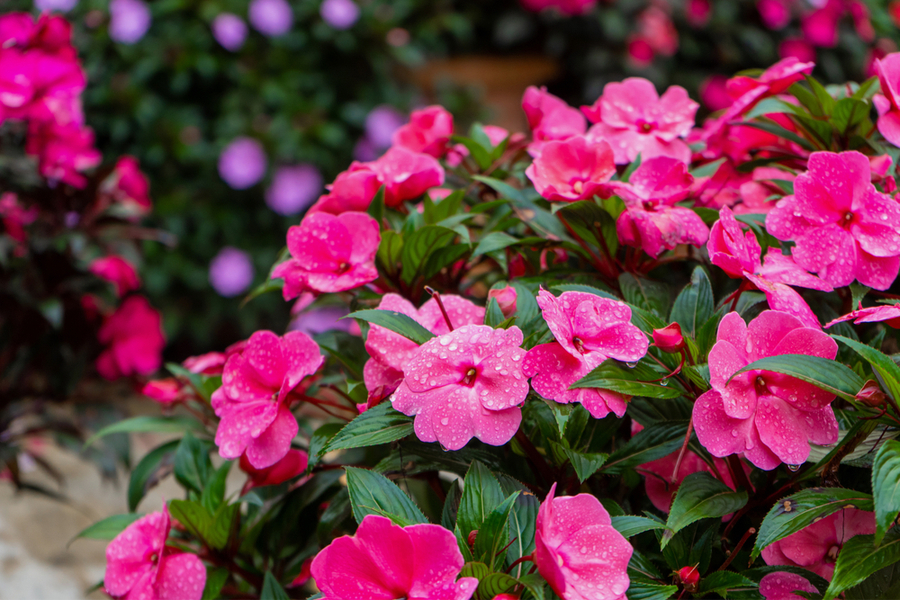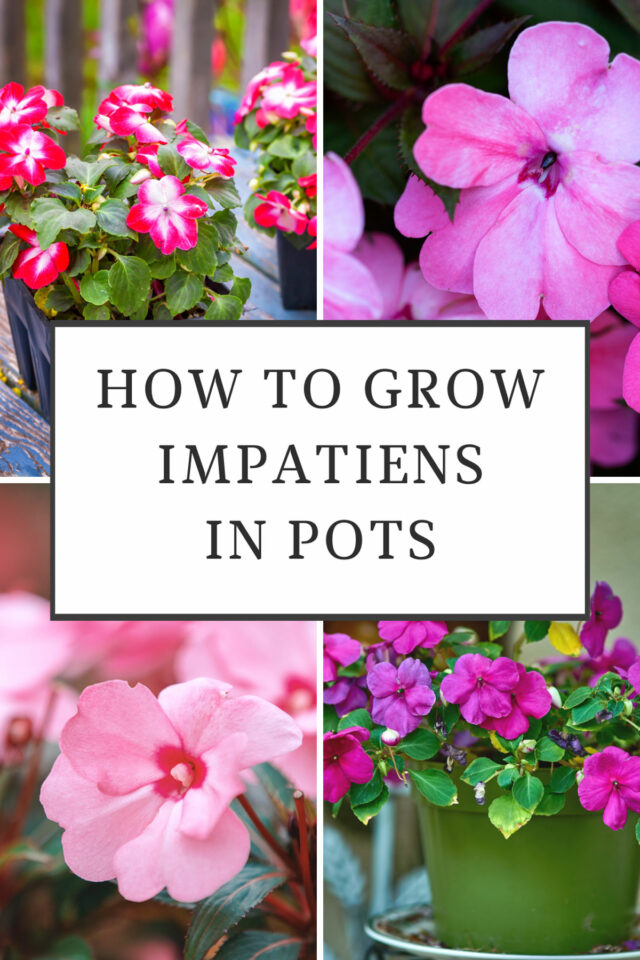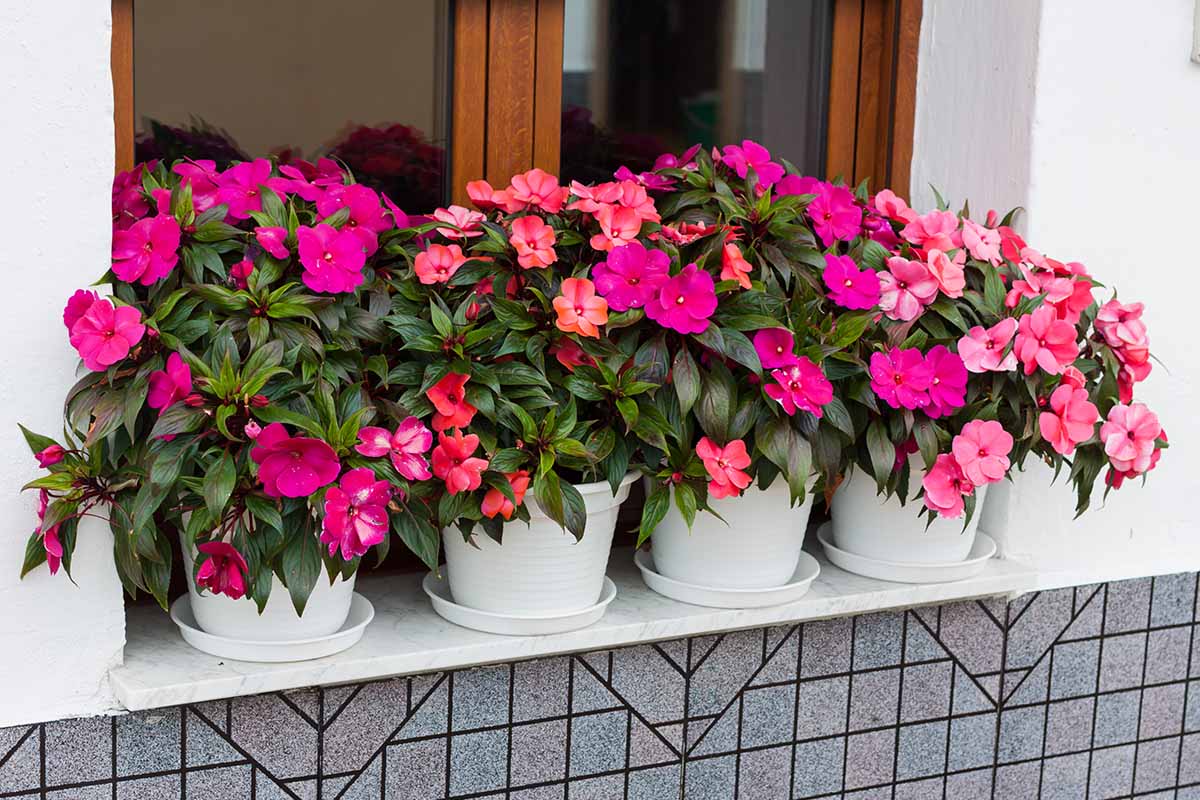Understanding Impatiens Life Cycle
Impatiens, also known as busy Lizzie, are tender perennials that thrive in warm weather. These plants are native to tropical regions and typically grow as annuals in cooler climates. To understand whether impatiens come back every year, it’s essential to grasp their life cycle. Impatiens plants germinate, grow, produce flowers and seeds, and eventually die back with the first frost. However, in regions with mild winters, impatiens may survive the winter months and regrow in the spring.
Impatiens are sensitive to frost and freezing temperatures, which can damage or kill the plant. In areas with harsh winters, impatiens are often grown as annuals, and new plants are started from seed or cuttings every spring. In warmer climates, impatiens can be grown as perennials, and with proper care, they can come back year after year. Factors such as climate, soil quality, and maintenance play a significant role in determining whether impatiens will return.
In regions with moderate winters, impatiens may go dormant during the winter months, only to regrow in the spring when temperatures rise. This process is called “overwintering,” and it allows impatiens to conserve energy and survive the cold temperatures. By understanding the life cycle of impatiens, gardeners can take steps to encourage these plants to come back year after year, providing a burst of color and vibrancy to the garden.
While impatiens can be sensitive to frost, they are relatively low-maintenance plants that can thrive in a variety of conditions. With proper care, including adequate sunlight, watering, and fertilization, impatiens can provide a stunning display of flowers throughout the growing season. By grasping the life cycle of impatiens, gardeners can better appreciate these beautiful plants and take steps to ensure their return year after year.
Do Impatiens Come Back Every Year? Separating Fact from Fiction
One of the most common questions about impatiens is whether they come back every year. The answer to this question depends on several factors, including climate, soil quality, and maintenance. In regions with mild winters, impatiens can survive the winter months and regrow in the spring, providing a burst of color and vibrancy to the garden. However, in areas with harsh winters, impatiens are often grown as annuals, and new plants are started from seed or cuttings every spring.
Climate plays a significant role in determining whether impatiens come back every year. In regions with moderate winters, impatiens may go dormant during the winter months, only to regrow in the spring when temperatures rise. In areas with extreme temperatures, impatiens may not survive the winter, and new plants will need to be started in the spring. Soil quality is also an essential factor, as impatiens prefer well-draining soil that is rich in organic matter.
Maintenance is another critical factor in determining whether impatiens come back every year. Impatiens require regular watering, fertilization, and pruning to thrive. Deadheading, or removing spent flowers, can encourage impatiens to produce more blooms, while pruning can help maintain the plant’s shape and promote healthy growth. By providing the right conditions and maintenance, gardeners can encourage impatiens to come back year after year.
While impatiens can be sensitive to frost and freezing temperatures, they can be grown in containers and brought indoors during the winter months to protect them from extreme temperatures. This can be a great way to keep impatiens alive and thriving year-round, even in areas with harsh winters. By understanding the factors that influence the return of impatiens, gardeners can take steps to create an environment that encourages these beautiful plants to come back every year.
In summary, whether impatiens come back every year depends on a combination of factors, including climate, soil quality, and maintenance. By providing the right conditions and care, gardeners can encourage impatiens to thrive and come back year after year, providing a stunning display of color and vibrancy to the garden.
How to Encourage Impatiens to Return Year After Year
Encouraging impatiens to return year after year requires creating an environment that promotes healthy growth and development. One of the most critical factors is providing adequate sunlight. Impatiens prefer partial shade to full sun, depending on the variety, so it’s essential to choose a location that receives the right amount of sunlight. In general, impatiens require at least 4-6 hours of direct sunlight per day.
Watering is another crucial aspect of encouraging impatiens to return year after year. Impatiens prefer well-draining soil and should be watered regularly, but not excessively. Overwatering can lead to root rot and other problems, so it’s essential to monitor the soil moisture and adjust watering accordingly. Fertilization is also important, as impatiens are heavy feeders and require regular applications of fertilizer to promote healthy growth.
Deadheading and pruning are also essential for encouraging impatiens to return year after year. Deadheading involves removing spent flowers to encourage the plant to produce more blooms, while pruning helps maintain the plant’s shape and promotes healthy growth. By removing dead or damaged leaves and stems, you can help prevent the spread of disease and encourage the plant to focus its energy on producing new growth.
In addition to providing the right growing conditions, there are several other tips and tricks you can use to encourage impatiens to return year after year. One of the most effective methods is to mulch around the base of the plants. Mulching helps retain moisture, suppress weeds, and regulate soil temperature, all of which can help promote healthy growth and encourage impatiens to return year after year.
Another effective method is to divide and replant impatiens every few years. This helps maintain the plant’s vigor and promotes healthy growth, as well as allowing you to share plants with friends and family. By dividing and replanting impatiens, you can help ensure that they continue to thrive and return year after year.
By following these tips and creating an environment that promotes healthy growth and development, you can encourage impatiens to return year after year and enjoy their beautiful blooms for months to come. Whether you’re growing impatiens in containers or in the ground, with the right care and attention, you can enjoy these stunning plants for years to come.
Overwintering Impatiens: A Step-by-Step Guide
Overwintering impatiens is a great way to save money and preserve your favorite varieties. By following these simple steps, you can keep your impatiens alive and thriving year-round. The first step is to dig and store the tubers. This should be done in the fall, before the first frost. Carefully dig up the impatiens tubers, making sure not to damage them. Then, store them in a cool, dark place, such as a basement or garage.
Next, you’ll need to propagate new plants from cuttings. This can be done in the spring, when the weather starts to warm up. Take 4-6 inch stem cuttings from the tips of the impatiens stems, and remove lower leaves. Dip the cut ends in rooting hormone, and plant them in a pot filled with a well-draining potting mix. Keep the soil moist and warm, and you should start to see new growth within a few weeks.
Another way to overwinter impatiens is to bring them indoors. This can be done by potting up the impatiens in a container, and moving them to a bright, sunny location indoors. Make sure to reduce watering and fertilization during the winter months, as impatiens require less nutrients when they’re not actively growing.
Overwintering impatiens has several benefits. For one, it allows you to save money by not having to purchase new plants every year. It also preserves your favorite varieties, which can be difficult to find in stores. Additionally, overwintering impatiens can help you get a head start on the growing season, as you’ll already have established plants to work with.
Some things to keep in mind when overwintering impatiens include making sure the tubers are stored in a cool, dark place, and keeping the soil moist but not waterlogged. It’s also important to monitor the plants for pests and diseases, and take action quickly if you notice any problems.
By following these steps and tips, you can successfully overwinter your impatiens and enjoy their beautiful blooms year-round. Whether you’re a seasoned gardener or just starting out, overwintering impatiens is a great way to add some color and vibrancy to your garden, even in the dead of winter.
Common Mistakes to Avoid When Growing Impatiens
While impatiens are relatively easy to grow, there are some common mistakes to avoid in order to ensure they thrive. One of the most common mistakes is inadequate sunlight. Impatiens require at least 4-6 hours of direct sunlight per day, so make sure to choose a location that receives sufficient sunlight.
Overwatering is another common mistake to avoid. Impatiens prefer well-draining soil and can be susceptible to root rot if the soil is too wet. Make sure to check the soil moisture regularly and avoid watering if the soil is already moist.
Poor soil quality is also a common mistake to avoid. Impatiens prefer rich, fertile soil that is high in organic matter. Avoid using soil that is low in nutrients or has poor drainage, as this can lead to poor growth and increased susceptibility to disease.
Another common mistake is not deadheading regularly. Deadheading involves removing spent flowers to encourage the plant to produce more blooms. Regular deadheading can help promote healthy growth and encourage impatiens to come back year after year.
Not pruning regularly is also a common mistake to avoid. Pruning involves removing dead or damaged leaves and stems to promote healthy growth and prevent the spread of disease. Regular pruning can help keep impatiens looking their best and encourage them to come back year after year.
Finally, not monitoring for pests and diseases is a common mistake to avoid. Impatiens can be susceptible to pests such as aphids, whiteflies, and spider mites, as well as diseases such as powdery mildew and root rot. Regularly monitoring for these pests and diseases can help prevent infestations and ensure impatiens continue to thrive.
By avoiding these common mistakes, you can help ensure your impatiens thrive and come back year after year. Remember to provide adequate sunlight, water carefully, use high-quality soil, deadhead regularly, prune regularly, and monitor for pests and diseases.
Impatiens Varieties: Choosing the Right Type for Your Climate
Impatiens are a diverse group of plants, with many different varieties to choose from. Each variety has its own unique characteristics, and some are better suited to certain climates and garden conditions than others. In this section, we’ll introduce you to some of the most popular types of impatiens, and provide recommendations for choosing the right type for your climate and garden conditions.
New Guinea impatiens are one of the most popular varieties, and are known for their large, showy flowers and compact growth habit. They are ideal for gardens in USDA zones 9-11, and can thrive in partial shade to full sun. New Guinea impatiens are also relatively low-maintenance, and can tolerate a range of soil types.
Balsam impatiens are another popular variety, and are known for their delicate, fragrant flowers and slender growth habit. They are ideal for gardens in USDA zones 3-8, and can thrive in partial shade to full sun. Balsam impatiens are also relatively low-maintenance, and can tolerate a range of soil types.
Double impatiens are a type of impatiens that produces double flowers, with two layers of petals. They are ideal for gardens in USDA zones 9-11, and can thrive in partial shade to full sun. Double impatiens are also relatively low-maintenance, and can tolerate a range of soil types.
When choosing an impatiens variety, it’s essential to consider your climate and garden conditions. If you live in a hot, sunny climate, New Guinea impatiens may be a good choice. If you live in a cooler, shadier climate, Balsam impatiens may be a better option. Double impatiens are a good choice for gardens in USDA zones 9-11, and can add a touch of elegance to any garden.
In addition to considering your climate and garden conditions, it’s also essential to consider the specific growing conditions of each impatiens variety. Some impatiens varieties require more sunlight than others, while some require more frequent watering. By choosing the right impatiens variety for your climate and garden conditions, you can ensure that your plants thrive and come back year after year.
Companion Planting with Impatiens: Tips and Tricks
Companion planting is a technique used to enhance the growth and health of plants by pairing them with other plants that have complementary properties. Impatiens can benefit from companion planting, as it can help to deter pests, improve soil quality, and increase growth. In this section, we’ll discuss the benefits of companion planting with impatiens and provide tips and tricks for choosing the right companion plants.
One of the main benefits of companion planting with impatiens is pest control. Impatiens can be susceptible to pests such as aphids, whiteflies, and spider mites, but companion planting can help to deter these pests. For example, planting marigolds with impatiens can help to repel nematodes, which can harm impatiens. Basil is another good companion plant for impatiens, as it can help to repel aphids and other pests.
Companion planting can also help to improve soil quality. Impatiens prefer well-draining soil that is rich in organic matter, and companion planting can help to achieve this. For example, planting comfrey with impatiens can help to add nutrients to the soil, while planting clover can help to fix nitrogen in the soil.
In addition to pest control and soil improvement, companion planting can also help to increase growth. Impatiens can benefit from the shade provided by larger plants, such as sunflowers or corn. Planting impatiens with these plants can help to create a microclimate that is ideal for growth.
When choosing companion plants for impatiens, it’s essential to consider the specific needs of the plants. Impatiens prefer partial shade to full sun, so choose companion plants that have similar light requirements. Also, consider the growth habits of the plants and choose companion plants that won’t compete with impatiens for space or resources.
Some good companion plants for impatiens include:
- Marigolds: repel nematodes and other pests
- Basil: repel aphids and other pests
- Comfrey: add nutrients to the soil
- Clover: fix nitrogen in the soil
- Sunflowers: provide shade and create a microclimate
- Corn: provide shade and create a microclimate
By choosing the right companion plants, you can create a thriving and healthy environment for your impatiens. Remember to consider the specific needs of your impatiens and choose companion plants that complement their growth habits and requirements.
Maintaining Impatiens in Containers: A Year-Round Guide
Maintaining impatiens in containers can be a bit more challenging than growing them in the ground, but with the right care and attention, you can enjoy these beautiful plants year-round. In this section, we’ll provide a comprehensive guide on how to maintain impatiens in containers, including how to choose the right potting mix, how to water and fertilize, and how to protect plants from extreme temperatures.
Choosing the right potting mix is essential for maintaining impatiens in containers. Look for a mix that is well-draining and rich in organic matter. Avoid using regular garden soil, as it can compact and prevent proper drainage. Instead, use a potting mix specifically designed for containers.
Watering is also crucial for maintaining impatiens in containers. Make sure to water your impatiens regularly, but avoid overwatering. Check the soil moisture by sticking your finger into the soil up to the first knuckle. If the soil feels dry, it’s time to water. If it’s already moist, wait another day or two before watering again.
Fertilizing is also important for maintaining impatiens in containers. Use a balanced fertilizer that is high in phosphorus, as this will promote healthy root growth and blooming. Avoid using too much fertilizer, as this can damage the roots and cause the plant to become leggy.
Protecting your impatiens from extreme temperatures is also essential. If you live in an area with very hot summers, make sure to provide your impatiens with some shade, especially during the hottest part of the day. If you live in an area with very cold winters, bring your impatiens indoors or move them to a protected location to prevent damage from frost and freezing temperatures.
Some other tips for maintaining impatiens in containers include:
- Deadheading: remove spent flowers to encourage more blooming
- Pruning: prune back leggy stems to promote bushy growth
- Pest control: check for pests regularly and treat promptly if necessary
- Repotting: repot your impatiens every year or two to provide fresh soil and a larger pot if necessary
By following these tips and guidelines, you can enjoy your impatiens in containers year-round. Remember to choose the right potting mix, water and fertilize regularly, and protect your plants from extreme temperatures. With proper care and attention, your impatiens will thrive and provide beautiful blooms for months to come.







